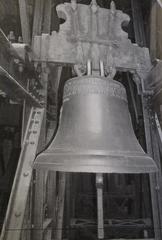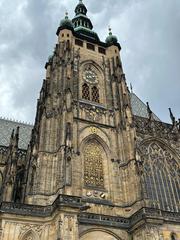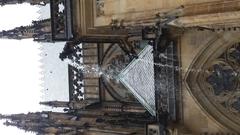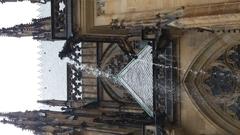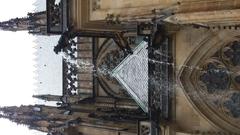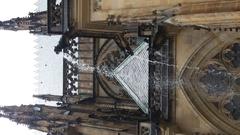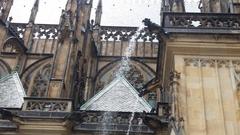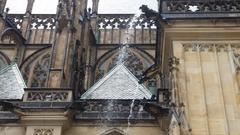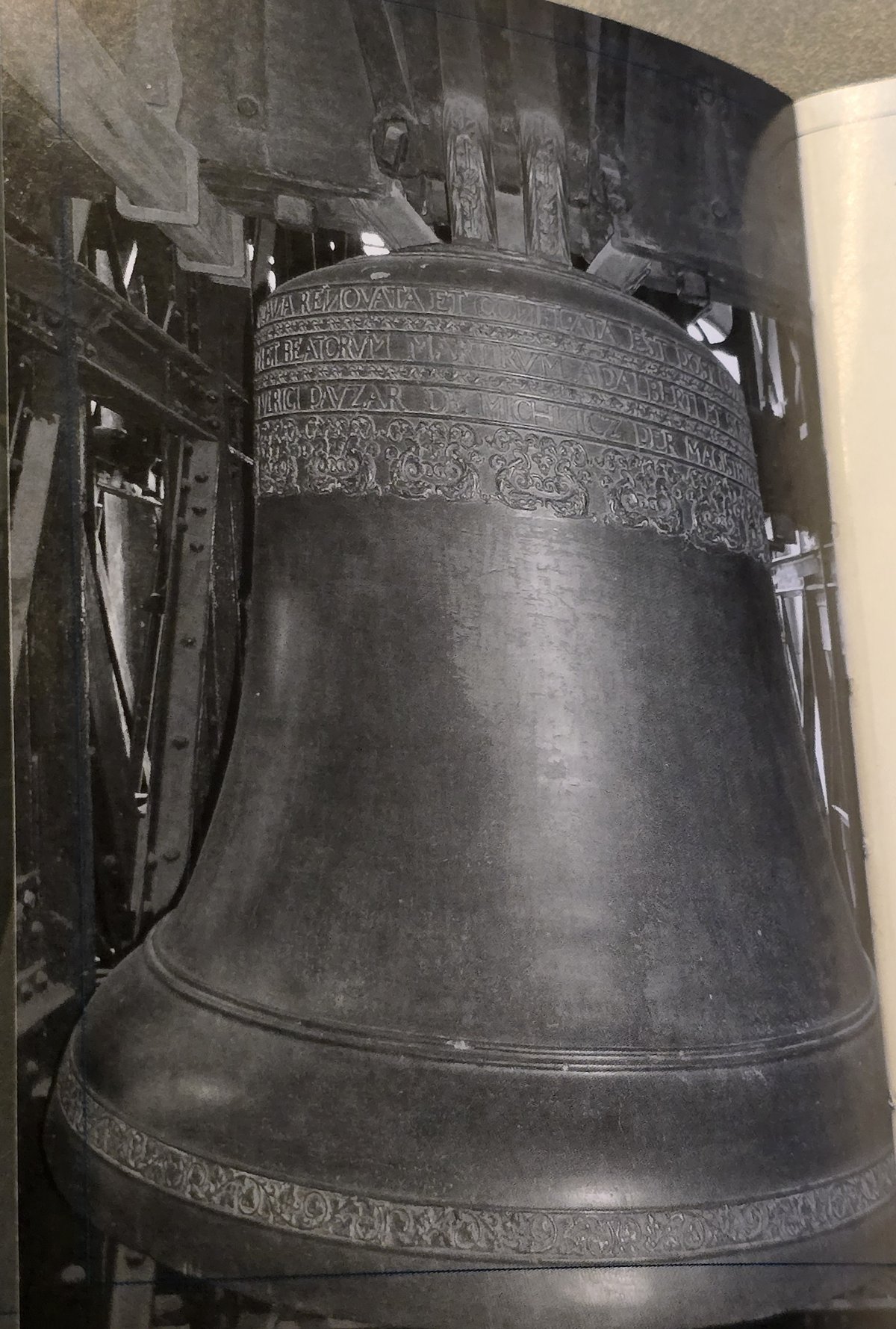
St. Vitus Cathedral Prague: Visiting Hours, Tickets, and Historical Significance
Date: 03/07/2025
Introduction
St. Vitus Cathedral, the crown jewel of Prague Castle, is a breathtaking monument of Gothic architecture and a cornerstone of Czech cultural identity. From its origins in the 10th century to its completion in the 20th, the cathedral has been the site of royal coronations, burials, and pivotal moments in Bohemian history. This comprehensive guide offers essential information about St. Vitus Cathedral—including opening hours, ticketing, accessibility, and visitor tips—while illuminating its architectural splendor and profound historical significance (prague.net; Amazing Czechia).
Table of Contents
- Historical Overview
- Visitor Information
- Architectural and Artistic Highlights
- Integration with Prague Castle and Surroundings
- Restoration and Modern Enhancements
- Practical Visitor Information
- Frequently Asked Questions (FAQ)
- Conclusion
- Visuals and Media Recommendations
- References and Further Reading
Historical Overview
Early Foundations: From Rotunda to Basilica
St. Vitus Cathedral’s story began in the early 10th century when Prince Wenceslas I established a Romanesque rotunda dedicated to St. Vitus, making it a central site for Christian worship in Bohemia. The rotunda soon became the burial site of Wenceslas himself (prague.net). In the 11th century, the original rotunda was replaced by a larger Romanesque basilica under Prince Spytihněv II, reflecting Prague’s rising religious and political stature (historyvisit.one).
The Gothic Vision and Expansion
The transformation into a grand Gothic cathedral began in 1344 after Prague was elevated to an archbishopric. Charles IV, King of Bohemia and later Holy Roman Emperor, commissioned French architect Matthias of Arras to realize his vision. Following Matthias’s death, Peter Parler, a German-Bohemian architect, expanded on these plans, introducing innovative vaulting and ornate sculptural elements that define the cathedral’s unique style (storyofprague.cz; pragueexperience.com).
Interruptions and Neo-Gothic Completion
Construction was frequently interrupted by wars and political upheaval—including the Hussite Wars—leaving the cathedral unfinished for centuries. The final completion occurred in the late 19th and early 20th centuries, driven by the Czech National Revival and the efforts of architects Josef Mocker and Kamil Hilbert. The Neo-Gothic western facade and other additions were finished in 1929, marking 1,000 years since the death of St. Wenceslas (english.radio.cz).
Visitor Information
Opening Hours
- April to October: 9:00 AM – 5:00 PM
- November to March: 9:00 AM – 4:00 PM (Sunday: noon – 4:00 PM)
- Closed or limited access: During major holidays, religious ceremonies, and special events (hradc.cz)
Check the official Prague Castle website for real-time updates, especially before your visit.
Tickets and Entry
- General admission: 250–350 CZK (included in Prague Castle circuit tickets)
- Discounts: Available for students, children, and seniors
- Free entry: For children under 6 and with select Prague Castle passes
- Tower access: Additional ticket required (150 CZK)
- Purchase: Online or at Prague Castle ticket offices (visitprague.info)
Guided Tours and Audio Guides
- Guided tours: Available in multiple languages, covering the cathedral’s history, architecture, and art
- Audio guides: Rent on-site or download via official apps
- Professional guides: Certified guides for private or group tours can be booked in advance (tourtravelworld.com)
Accessibility and Visitor Tips
- Accessibility: Main nave accessible; some chapels and the tower have stairs and are not suitable for all visitors
- Dress code: Modest attire recommended
- Photography: Permitted (no flash or tripods inside)
- Best times to visit: Early morning or late afternoon for fewer crowds
- Nearby attractions: Old Royal Palace, Golden Lane, Castle Gardens, and Charles Bridge (nomads-travel-guide.com)
Architectural and Artistic Highlights
Exterior Marvels
- Towers and Facades: The cathedral’s silhouette is a dominant feature of Prague’s skyline. The main tower rises to 102.8 meters, with the twin front towers at 82 meters each. The Neo-Gothic western facade, adorned with intricate sculptures and a 7-meter rose window, is a visual highlight (en.wikipedia.org; ourwanders.com).
- Flying Buttresses and Gargoyles: These structural innovations allow for expansive stained glass windows and are decorated with expressive gargoyles and saints (prague.org).
The Golden Gate
- Southern entrance: Features gold leaf mosaics of the Last Judgment, historically used by Bohemian royalty during coronations (worldcitytrail.com).
Interior Treasures
- Nave and Transept: A 124-meter long nave with ribbed vaults and pointed arches, illuminated by vibrant stained glass (storyofprague.cz).
- Stained Glass Windows: Notably, the Art Nouveau window by Alfons Mucha depicting Czech saints, and the Last Judgement window by Max Švabinský (gocity.com).
- St. Wenceslas Chapel: Lavishly adorned with gold, semi-precious stones, and 14th-century frescoes; houses the tomb of St. Wenceslas and the Crown Jewels chamber (visitprague.info).
- Royal Crypt: Final resting place of Czech monarchs and saints, including Charles IV and Rudolf II.
The Great South Tower and Zikmund Bell
- Tower climb: 287 steps to panoramic views of Prague and the Vltava River
- Zikmund Bell: Cast in 1549, the largest in the Czech Republic, weighing 16.5 tons (nomads-travel-guide.com)
Integration with Prague Castle and Surroundings
St. Vitus Cathedral is the spiritual and architectural centerpiece of the Prague Castle complex, visually dominating the city and serving as the site of royal ceremonies, burials, and state events. Its towers and spires are visible from across Prague, symbolizing the city’s enduring legacy (praguetouristinformation.com).
Restoration and Modern Enhancements
Continuous restoration preserves the cathedral’s splendor. The 20th-century renovation led by Josef Mocker and Kamil Hilbert restored key elements and added the western facade. A new organ—crafted with modern acoustic technology—is scheduled for completion in June 2026, blending tradition with innovation (prague.fm).
Practical Visitor Information
How to Get There
- Metro: Malostranská (Line A), then tram 22 to Pražský hrad
- Address: Old Royal Palace, Prague Castle, 119 00, Hradčany, Czech Republic
- On foot: Accessible via scenic walks through the Castle District (thetouristchecklist.com)
Visiting Tips
- Buy tickets in advance: Especially during peak season
- Consider a Prague city card: For discounted entry to multiple attractions
- Combine your visit: Explore Castle District highlights like the Old Royal Palace and Golden Lane
- Allow enough time: A full visit may take several hours
Frequently Asked Questions (FAQ)
Q: What are the opening hours of St. Vitus Cathedral?
A: April–October: 9:00 AM–5:00 PM; November–March: 9:00 AM–4:00 PM (Sunday: noon–4:00 PM). Hours may vary on holidays and for special events.
Q: How much do tickets cost?
A: Adult tickets are 250–350 CZK, with discounts for children, students, and seniors. Tower access is an additional 150 CZK.
Q: Is St. Vitus Cathedral wheelchair accessible?
A: The main nave is accessible; some chapels and the tower are not.
Q: Are guided tours available?
A: Yes, guided and audio tours are available in multiple languages.
Q: Can I take photos inside?
A: Yes, but without flash or tripods, and not during religious services.
Conclusion
St. Vitus Cathedral is more than a masterpiece of Gothic architecture; it is a living symbol of Czech heritage. Its soaring vaults, dazzling stained glass, royal tombs, and sacred chapels invite visitors to journey through centuries of history. With thoughtful planning—checking hours, booking tickets, and considering a guided tour—you can immerse yourself in the cathedral’s grandeur and spiritual atmosphere. Whether you’re a history enthusiast, art lover, or first-time visitor, St. Vitus Cathedral promises an unforgettable Prague experience.
Visuals and Media Recommendations
- Include high-resolution images of the cathedral’s exterior, stained glass windows, and city views from the Great South Tower. Use SEO-optimized alt tags such as “St. Vitus Cathedral visiting hours facade” and “Prague historical sites interior stained glass.”
- Consider embedding an interactive map of Prague Castle and virtual tour links for remote exploration.
References and Further Reading
- This guide is based on authoritative sources, including prague.net, storyofprague.cz, praguehints.com, Amazing Czechia, visitprague.info, thetouristchecklist.com, hradc.cz, and prague.fm.
Discover More and Plan Your Visit
For more in-depth guides and audio tours of St. Vitus Cathedral and other Prague attractions, download the Audiala app. Follow us on social media for the latest updates, insider tips, and exclusive content. Make your visit to St. Vitus Cathedral a highlight of your Prague journey!
Source Links
- prague.net
- Amazing Czechia
- pragueexperience.com
- storyofprague.cz
- visitprague.info
- historyvisit.one
- english.radio.cz
- praguehints.com
- czechia-prague.com
- en.wikipedia.org
- ourwanders.com
- prague.org
- worldcitytrail.com
- gocity.com
- prague.fm
- praguetouristinformation.com
- thetouristchecklist.com
- nomads-travel-guide.com
- tourtravelworld.com
- hradc.cz

